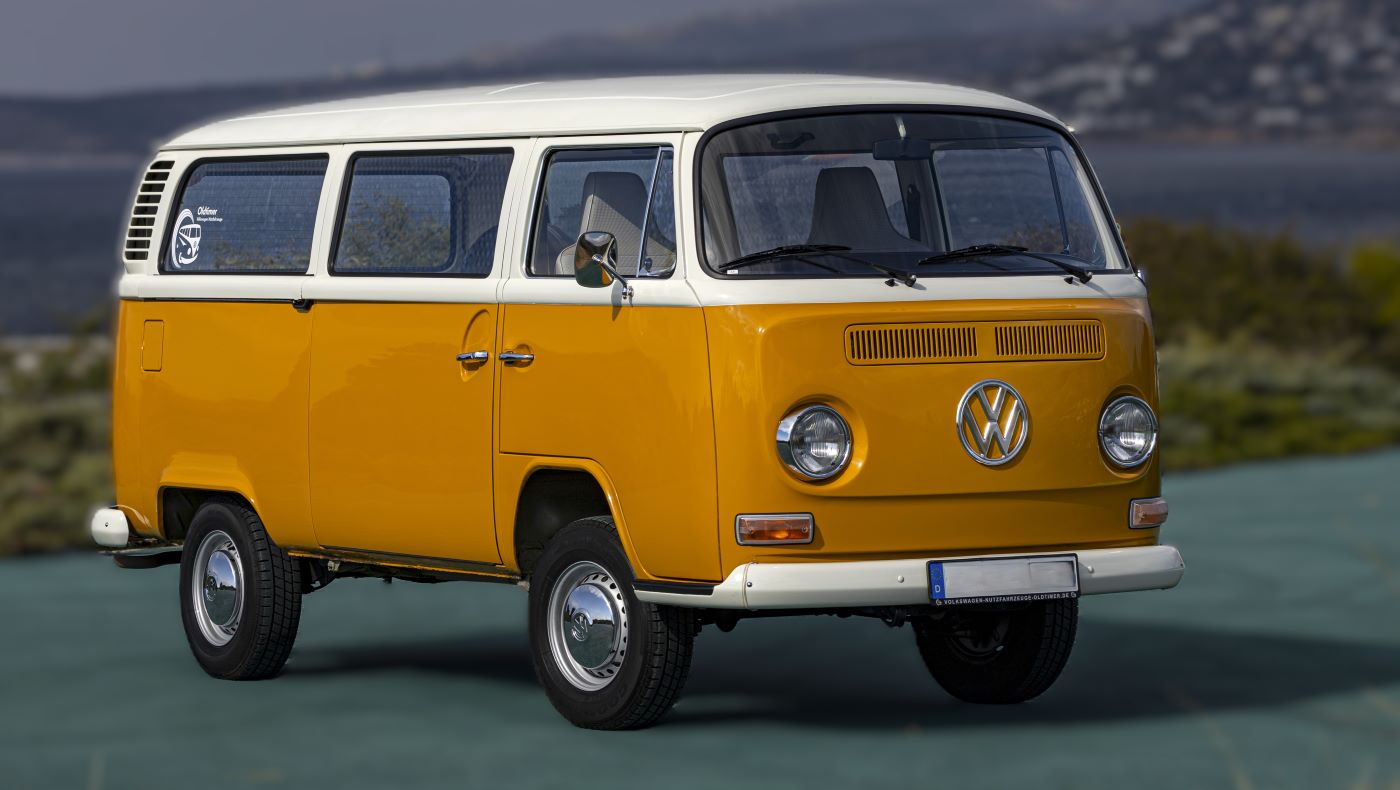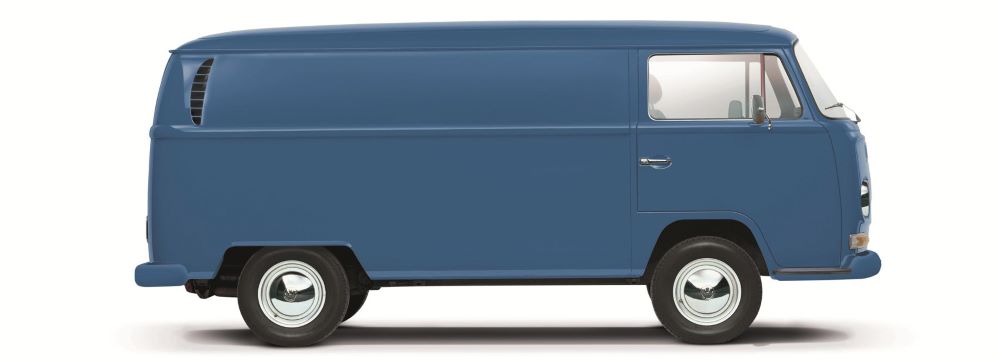
T2 – 1967 to 1979: Tens of thousands of young people flocked to the Monterey Pop Festival in California in 1967. The Beatles brought out Sgt. Pepper’s Lonely Hearts Club Band, one of the most important albums of all time. In the middle of this soundtrack from those days, the second generation of the VW Bus made its debut in 1967: the T2. It is the generation of the VW Bus with which today’s baby boomers grew up, with which they as children discovered the world with their parents in the back of the VW bus, with which the postal service delivered parcels, with which Europe’s tradespeople went to work, and in which policemen and paramedics did their duty. As a camper van, the T2 became an indestructible vehicle for globetrotters. In August 1969, musicians such as Jimi Hendrix and Joan Baez made history in Woodstock. And in the middle of it all was the VW Bus. Three days of peace and music in Woodstock at which the most famous of all VW Bus photos was taken: a picture of the “flower power T1” – the Light Bus – with a couple on its roof. It burned itself into humanity’s collective memory and made the VW Bus an icon of automotive freedom. This T1 was created and painted by the artist Dr. Bob Hieronimus, who is still connected to the VW Bus today and created a modern interpretation with the ‘Earth Buzz’ in 2023.
The new front end was the most distinctive feature of the T2. Instead of the V-shaped vertical modulation between the round headlights, a design with horizontal lines now emphasised the width of the Volkswagen. But it was not just these details that made the T2 look more modern: visibly larger side windows and the one piece, strongly curved windscreen stood out the most. In addition, the T2 now had a sliding door as standard. The engineers noticeably modernised the technology. The most obvious progress was made in the area of the chassis and brakes. With an unchanged wheelbase at 2.40 metres and a slightly increased width, the body gained 20 centimetres in length. As a result, the T2 impressed with even greater spaciousness. A major facelift followed in 1972 and consolidated the success of the world bestseller. In 1978, the 4.5 millionth Transporter left the production halls. One year later, German T2 production was discontinued. By then, 2.2 million units of this second generation of VW Bus had been produced. A complete end to production was, however, still a long way off. It just continued elsewhere: up until 1987 in the Mexican Puebla plant with the air-cooled flat engine, then right up until 1996 with water-cooled four-cylinder engines. In addition, another 355,000 T2c would be built at Volkswagen do Brasil by 2013, until regulations led to the final farewell of this evergreen. The last 1,200 units of the T2 left the factory as the “56 Anos Kombi – Last Edition”.
Volkswagen Transporter T2
The T2 was manufactured in Hannover, Germany from 1967 through 1979

The iconic camper van joined the Transporter line-up in 1951 but it wasn’t until the 1960s when it was adopted by a free-spirited generation. It became a cult symbol of an alternative lifestyle and images of vans painted in crazy colours and psychedelic designs enthral to this day. The versatile, practical camper van captured the spirit of the times and has been the epitome of independent travel ever since.
Volkswagen Camper Van Milestones:
| 1949: | The first ever Volkswagen Transporter van is launched at the Geneva Motor Show, with its distinctive smiling face. |
| 1951: | The Volkswagen Transporter is developed into the iconic Volkswagen camper van. |
| 1960s: | The camper van is adopted by the hippie generation, becoming a cult symbol of an alternative lifestyle. |
| 1967: | Second generation Transporter, known as the T2, does away with the classic, ‘splittie’ (split windscreen) design and introduces panoramic vision, gaining the nickname ‘Bay’. |
| 1969: | A Volkswagen camper van becomes the ‘Mystery Machine’ in hit cartoon series ‘Scooby Doo’. |
| 1979: | The T2 becomes the T3, boasting a more angular design |

You must be logged in to post a comment.